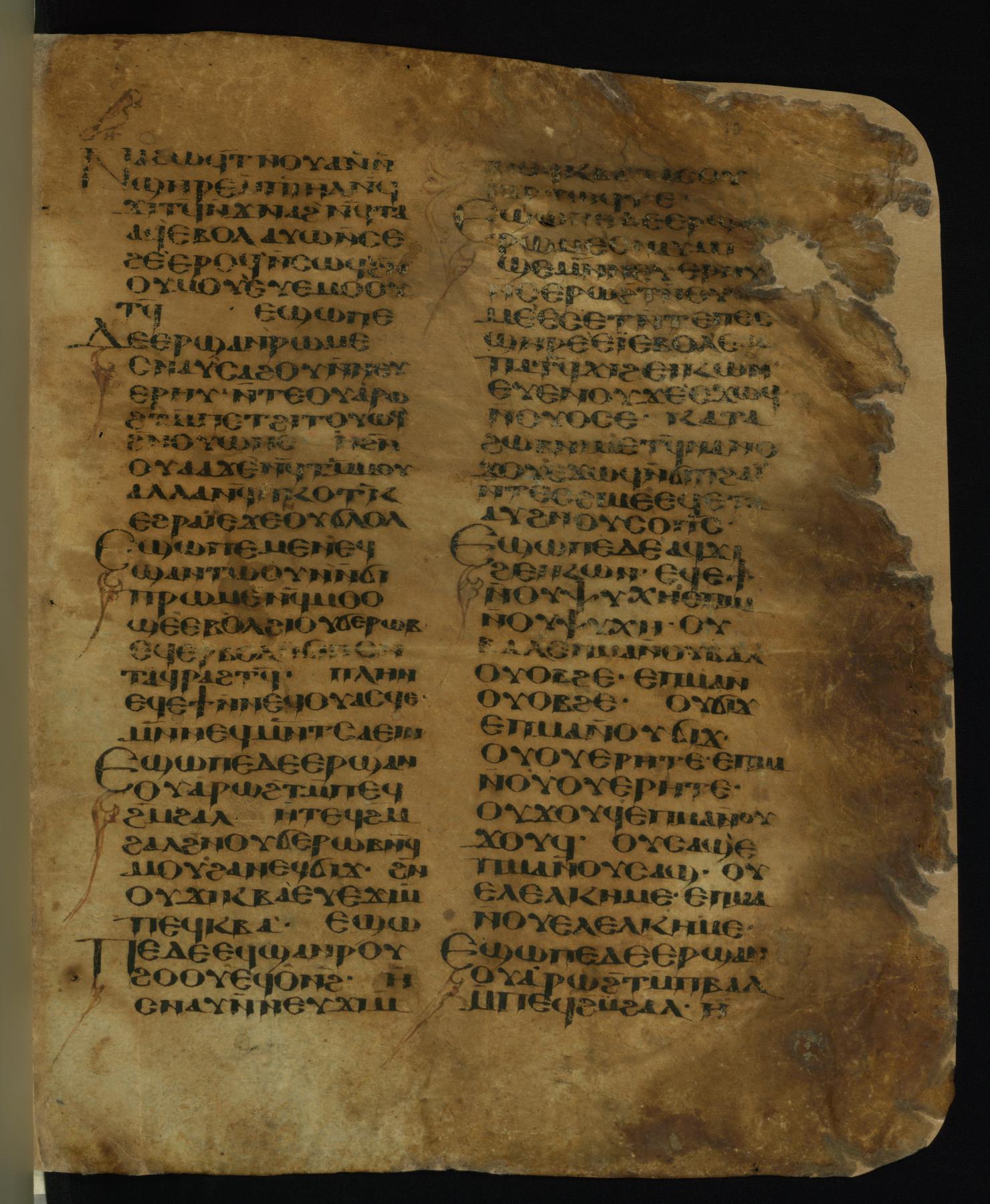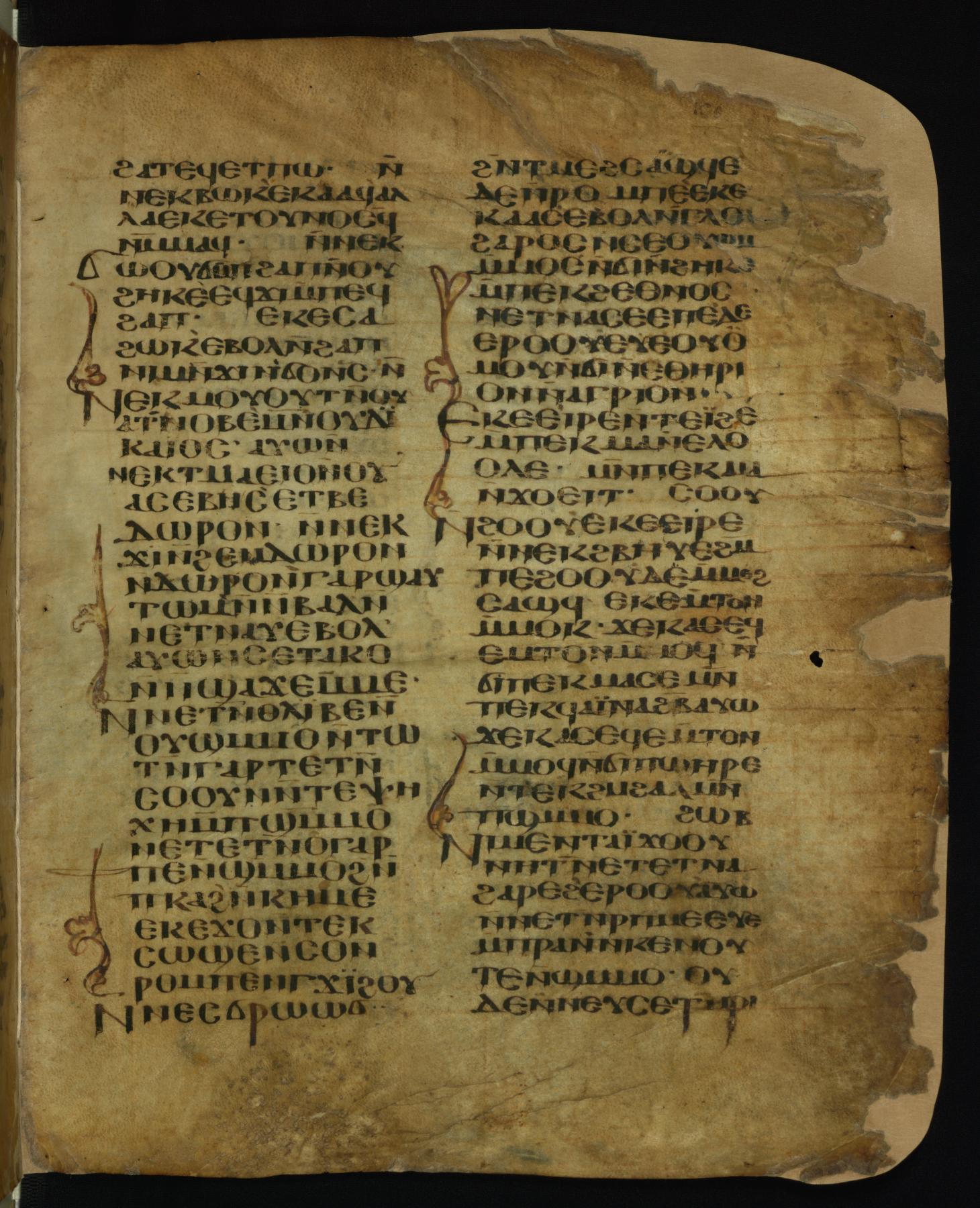Fragment of the Book of Exodus
(Manuscripts and Rare Books)
This fragment from the Book of Exodus is a bifolium presenting the text of Exodus 21:16-35a on fol. 1 and 23:5b-21a on fol. 2. The missing text in between these two folios would have constituted another bifolium. Written in Sahidic Coptic script, the biblical manuscript to which the bifolium once belonged was produced in Egypt in the eighth century, probably by a monastic scribe and perhaps in the Fayum or Wadi al-Natrun, where monasteries continued to thrive during the early Islamic conquest. It is difficult to determine the full extent of the manuscript, but a combined volume of Genesis and Exodus as part of a multivolume set of the Bible is certainly possible, if not likely, on the evidence of the Coptic numerals inscribed at the top of each folio side.
Provenance
Provenance (from the French provenir, 'to come from/forth') is the chronology of the ownership, custody, or location of a historical object. Learn more about provenance at the Walters.
Frank Tano, Cairo [date and mode of acquisition unknown]; Joseph Brummer, New York, September 14, 1945, by purchase; Walters Art Museum, 1949, by purchase [through Parke-Bernet Galleries in New York (no. 97)].
Exhibitions
| 2007-2008 | The Early History of the Bible. Phoenix Art Museum, Phoenix. |
| 2005 | The Early History of the Bible: Transmission of Sacred Scripture from Ancient Times to the Age of Painting. The Walters Art Museum, Baltimore. |
| 2003-2004 | Secret Signs: Egyptian Writing. The Walters Art Museum, Baltimore. |
Geographies
Egypt (Place of Origin)
Measurements
Overall H: 12 15/16 x W: 10 9/16 in. (32.8 x 26.9 cm); Folio H: 12 3/8 × W: 10 1/4 in. (31.5 × 26 cm)
Credit Line
Museum purchase, 1949
Location in Museum
Not on view
Accession Number
In libraries, galleries, museums, and archives, an accession number is a unique identifier assigned to each object in the collection.
In libraries, galleries, museums, and archives, an accession number is a unique identifier assigned to each object in the collection.
W.739








